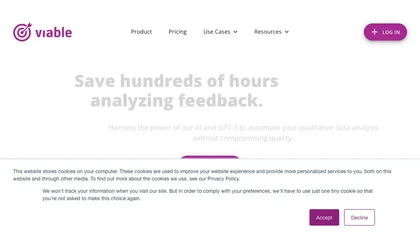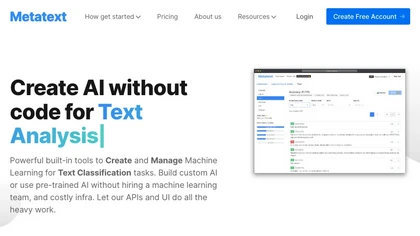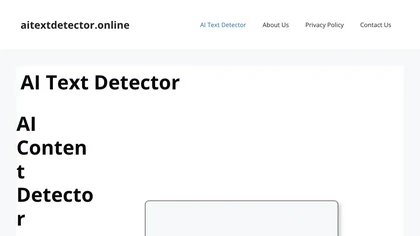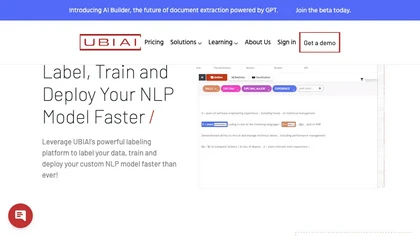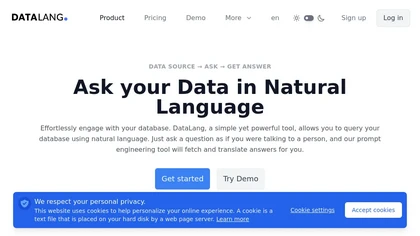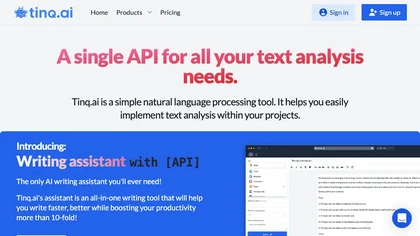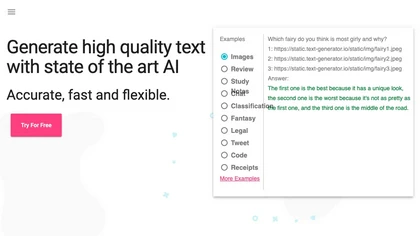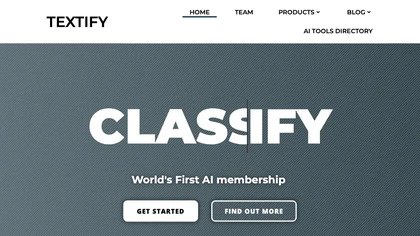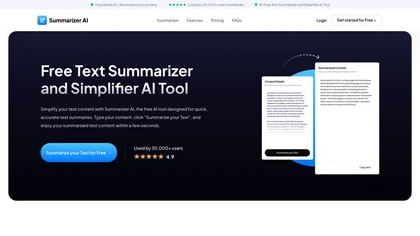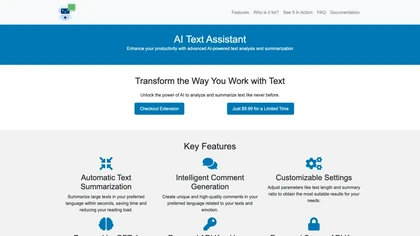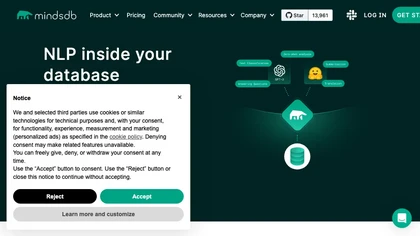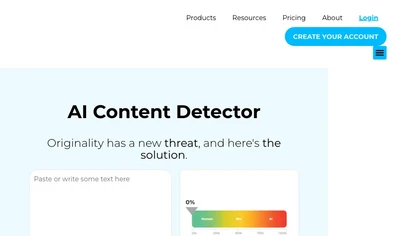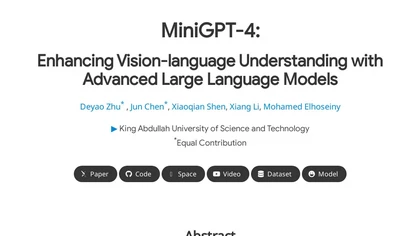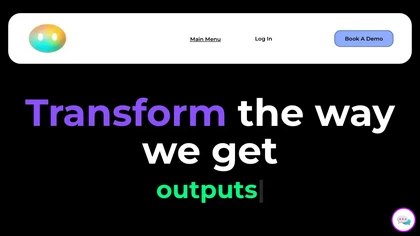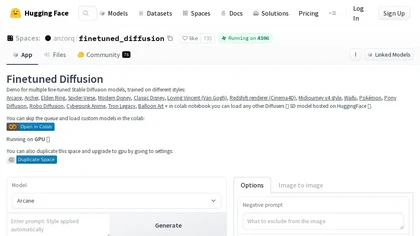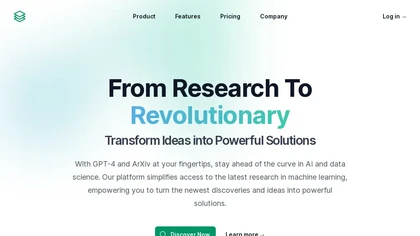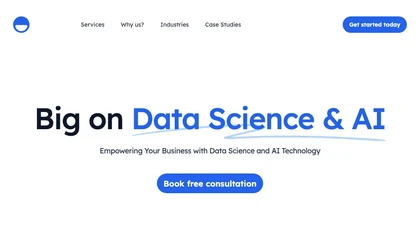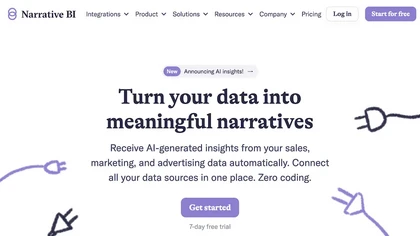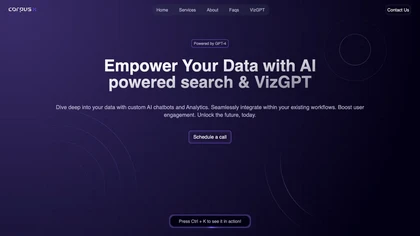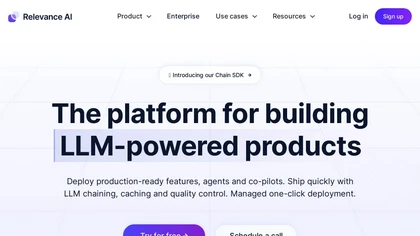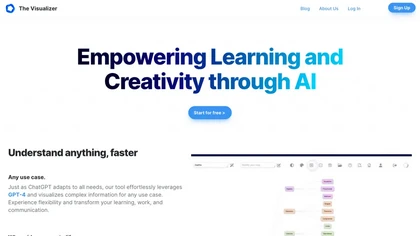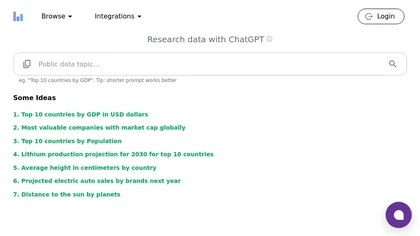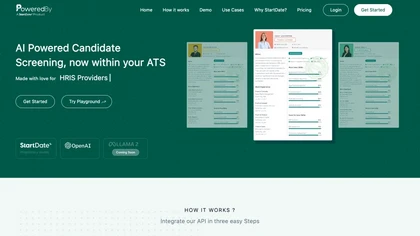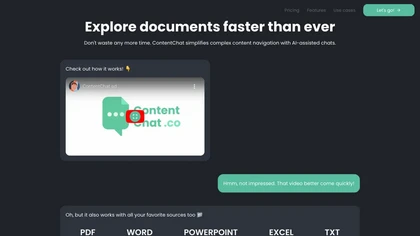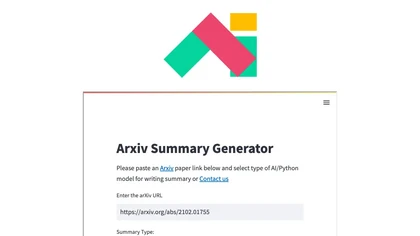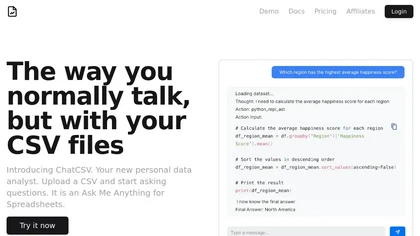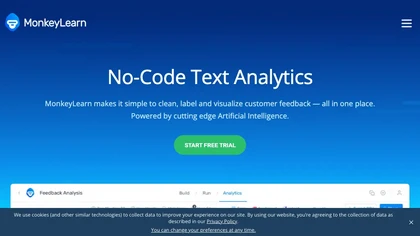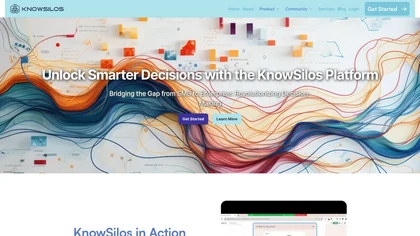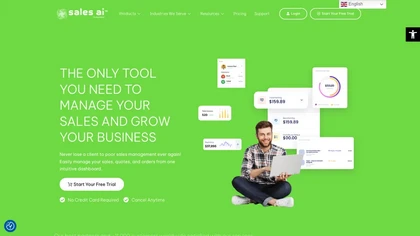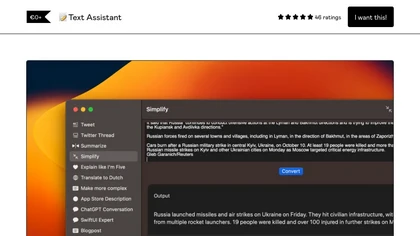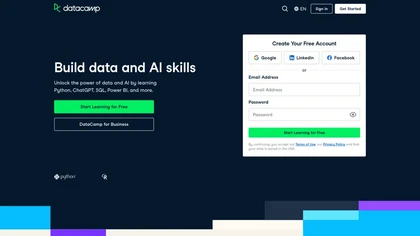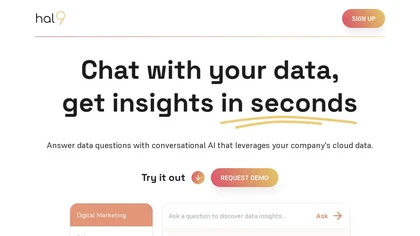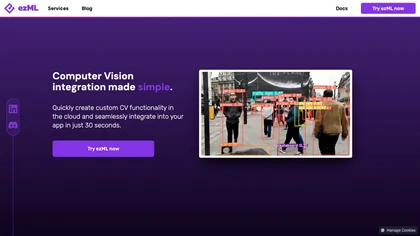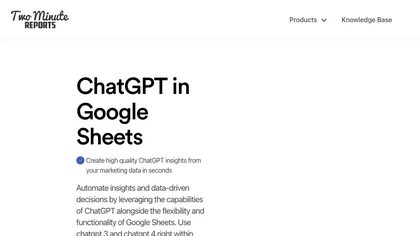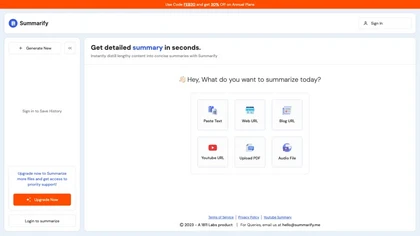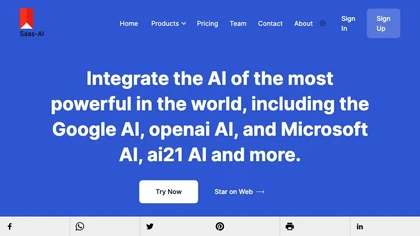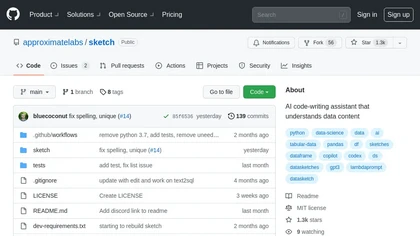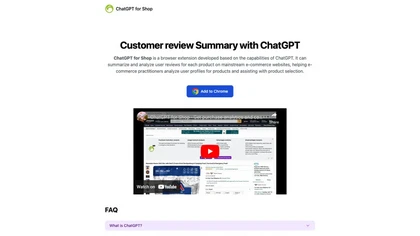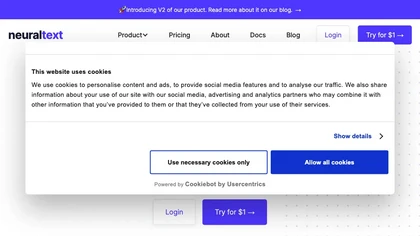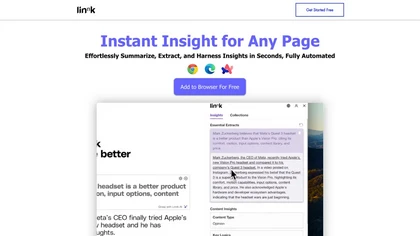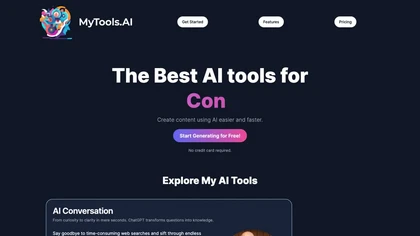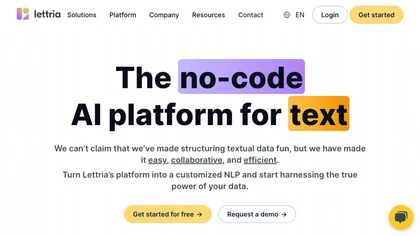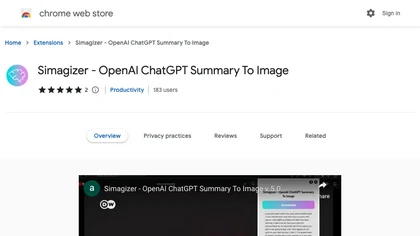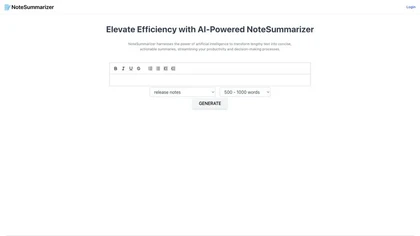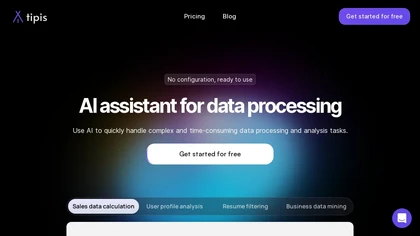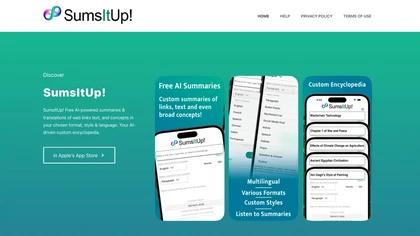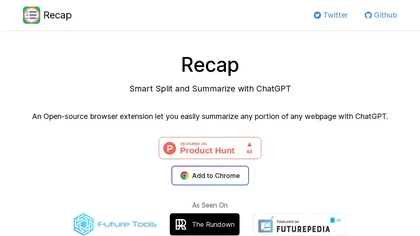AI use cases for Research Analysis
Generative AI can be applied in various applications for research analysis. Here are some examples to explore below for inspiration with AI tools to get you started with using AI in research analysis.
🛠️ 70 AI tools for Research Analysis
Explore a dynamic list of some of the most popular tools to get you started with various AI use cases and applications for Research Analysis to streamline your workflows and productivity today.
ChatYourExcel features
- Natural Language Processing
- Entity Recognition
- Keyword Extraction
- Summarization
- Data-driven Decisions
viable features
- Automated qualitative data analysis
- Customer feedback understanding
- Nlp technology
- Feedback analysis
Metatext features
- No-code platform
- Nlp products
- Annotate
- Curate
- Build
- Deploy
- Maintain
- Automate complex workflows
- Text annotation
- Training
- Iteratively curate
AI Text Detector features
- Detecting if a piece of text is written by a human or ai.
- Detection of human and ai-written texts.
UBIAI features
- Text labeling
- Document annotation
- Multi-language support
- Object detection
- Model-assisted labeling
MicroMusic features
- Web-based tool
- Text summarization
- Key information extraction
- Natural language processing techniques
- Reading and research process optimization
DataLang features
- Query databases using natural language
- Fetch and translate answers
- Handle a wide range of questions
- Provide insights on metrics
- Integrate with other tools
🔥
Create your account, save tools & get personal recommendations
Receive a weekly digest of our handpicked top tools.
Unsubscribe anytime
Tinq.ai - NLP API features
- Ner
- Sentiment analysis
- Text classification
- Summarization
- Question answering
- Text generation
- Language detection
Text-Generator features
- Text generation
- Content analysis
- Prediction of human reactions
- Research assistance
- Text classification and clustering
- Code generation
- Translation
- Tone and voice change in generated text
- Api endpoint
- Bulk generation capabilities
Textify features
- Text classification
- Identification
- Modification
- Simplification
- Proprietary tools
Text Summarizer AI features
- Text summarization
- Advanced AI technology
- Analysis of sentence structures, word frequencies, and contextual relevance
- Ability to distill key themes and arguments
- Option for premium features through paid plans
AI Text Assistant features
- Text summarization in preferred language
- Utilizes GPT-4 technology from OpenAI
- Automatic comment generation
- Customizable settings for text length and summary ratio
- Applicable to various user types: content creators, writers, students, academics, marketers, journalists, business analysts, educators, and teachers
MindsDB features
- Automate text classification
- Labeling
- Summarizing
- Translation
- Question-answering
Crossplag features
- Detects human vs ai-generated text
- Uses machine learning algorithm and natural language processing techniques
- Provides fast, accurate analysis
- Easy to use with instant feedback
- Free to use and does not store analyzed data
Minigpt-4 features
- Image description generation
- Website creation based on hand-written drafts
- Story and poem generation inspired by images
- Problem solving based on images
- Cooking instruction teaching based on food photos
Maya AI features
- Data analysis
- Ai-powered natural language processing
- Faster and more accurate results
- Finding answers within data
Finetuned Stable Diffusion features
- Diffuse
- Generate
- Model fine-tuning
TextLayer features
- Search
- Recommendations
- Summaries
- Q&a sessions
- Step-by-step guidance
Think AI Agency features
- Natural language processing
- Computer vision
- Recommendation systems
- Predictive analytics
SceneXplain features
- Description
- Multilingual support
- Api integration
- Content creation
- E-commerce
Narrative BI features
- All the metrics under one roof
- Natural language generation
- Anomaly detection
- Scheduled reports
- AI driven insights
- Slack chatbot
- Multiple data channels integrations
Corpus-X features
- Powered by GPT-4 technology
- Data visualization capabilities
- Advanced search query functionalities
- Supports various data integrations
- Engagement through dedicated chatbots
Relevance AI features
- Ai chain creation
- Managed services deployment
- Custom ai application development
- Pre-trained ai/ml workflows
- Data access dashboard
The Visualizer features
- Empowers users to understand complex topics quickly
- Transforms ChatGPT-generated text into visual maps
- Facilitates visualization of scientific concepts, project management structures, etc.
- Enhances learning and boosts productivity through crystal-clear visuals
- Provides a versatile solution for visualizing and comprehending information efficiently
neuroflash features
- Text generation
- Image generation
- Natural language processing
- Machine learning
- Text summarization
- Image recognition
- Visual search
Columns features
- Create engaging data stories
- Insights from prompts and queries
- Customize graph settings
- Create interactive visualizations
- Collaborate within community
Summarize Tech features
- Video summary
- Long youtube videos
- Lectures
- Live events
- Government meetings
PoweredBy features
- Integration with ATS and HRIS providers
- API key generation for screening requests
- Utilizes proprietary model for job analysis
- Includes NLP and computer vision applications
- Proficiency in machine learning frameworks
SumoPPM features
- Create visually appealing charts and comprehensive dashboards
- Leverage natural language processing (NLP) for insights and predictions
- Seamless integration of blockchain technology and artificial intelligence
- Interactive project data analysis using natural language
- Features multi-company management and proprietary machine learning technology
Mixpanel Spark features
- Natural language processing for answering questions
- Access to CEO insights for generating ideas
- Chat with AI for efficient report generation
- Wide range of question types supported
- Built on OpenAI for robust security practices
ContentChat features
- AI-assisted chats
- Superpowered search feature
- Summarizing content efficiently
- Streamline learning process
- Analyze research materials
Arxiv Feed features
- Access to ai research papers
- One-line summaries (tldrs)
- Semantic search
- Weekly newsletter updates
ExplainThis.AI features
- Summarize long pages
- Provide simplified explanations
Arxiv Summary Generator features
- Generate summaries
- Stay up-to-date with latest research
- Provides accurate summaries
- Visitors can expect to find summaries of latest research papers
- User-friendly interface
ChatCSV
5ChatCSV features
- Import-csv
- Upload-file
- Generate-questions
- Visualize-data
- Analyze-campaigns
summariesbooks features
- GPT-3.5 and GPT-4 integration
- Book summaries generation
- Mind map generation
- Online book reading
- Chat feature for interacting with a book robot
MonkeyLearn features
- Text analytics
- Custom feedback
- Pre-built machine learning models
- Simplifies text analytics
- Instant insights
YC Application Optimizer features
- Data integration for structured knowledge graphs
- Extraction of insights from PDFs using NLP algorithms
- Creation of easily digestible reports with customizable templates
- Aggregation of large-scale data for quick analysis
- Visualization of critical information through persuasive reports
MEJ Sales AI features
- Sentiment analysis
- Natural language processing
- Identifying positive, negative, or neutral sentiments
- Insights into customer opinions and preferences
- Data-driven decision making
Text Assistant features
- Text generation
- Prompt creation
- Symbol prompt addition
- Output copying
- Time-saving
DataCamp features
- Text generation based on prompts
- Interacting with AI-generated responses
- Writing assistance and idea exploration
- Enhancing applications with natural language processing capabilities
- Generating text based on predefined prompts
AI Alfred features
- Summarize articles
- Summarize online text
- Save summaries
- Edit summaries
- Share summaries
Hal9
5Hal9 features
- Data-driven decision making
- Facilitates communication with cloud data
- Integration with existing systems
- Empowers business users to access insights independently
- Real-time data processing and analysis
SummarizR features
- Text summarization
- Video summarization
- Web page summarization
- Pdf lecture summarization
- Youtube walkthrough summarization
- Web tutorial summarization
- Audio file summarization
- Plain text file summarization
ezML features
- Zero-shot learning
- Text-to-model capabilities
- Prebuilt vision pipelines
- Effortless deployment and integration
- Rapid inference support
ChatGPT in Google Sheets features
- 1
- 2
- 3
- 4
- 5
SummarQ features
- Summarization of videos and texts
- Utilizes chatgpt technology
- Offers free web-based summarization services
- Supports multiple formats (YouTube videos, PDFs, docx files, plain text, audio, video)
- Provides concise summaries and precise answers
Summarify features
- Instantly distills lengthy content into concise summaries
- Supports pasting text, web URLs, blog URLs, YouTube URLs, and uploading PDF/audio files
- Generates detailed summaries in seconds
- User-friendly interface for quick access to summarized information
- Upgrade options with additional features like saving history and priority support
Saas-AI features
- Text processing
- Image processing
- Integration with top ai services
- Easy-to-use interface
- Affordable subscription plans
Summarizely features
- Monitor github activities
- Summarize teammates' github activities
- Send summarized results to slack channels
- Map teammates' activities to slack and github accounts
Sketch features
- Task1
- Task2
- Task3
- Task4
ChatGPT for Shop features
- Browser extension functionality
- User review extraction
- Text summarization
- Natural language processing
- Human-like text generation
Neuraltext features
- Generate marketing copy
- Generate blog posts
- Write seo content quickly and easily
AIPal features
- real-time chat with multiple AIs
- custom prompts
- image communication
- article summarization
- all-in-one assistance
Linnk features
- Effortless summarization of content
- Automated extraction of insights
- Filtering out 90% of fluff from content
- Language translation and summarization
- Streamlining content analysis and information retrieval
My tools.ai features
- Instantly answer any question using a powerful AI model
- Helps in writing essays, LinkedIn bios, Facebook posts, etc.
- Transforms ideas into stunning visuals with DALL-E 3 model
- Supports 20+ languages for generating complex algorithms, API calls, etc.
- Streamlines coding process and meets project deadlines efficiently
Pixels2Flutter features
- Text analysis
- Sentiment classification
- Customer feedback analysis
- Brand reputation monitoring
- Social media sentiment tracking
Lettria features
- Text labeling
- Cleaning
- Ontology management
- Vocabulary customization
- Taxonomy management
Videohighlight
2.2Videohighlight features
- Summarize
- Take notes
- Explore
- Speed up
- Extract key points
Simagizer features
- Summarize
- Visual representation
Note Summarizer features
- Text summarization
- AI-powered
- Summarizing various types of notes
- Range of text length support
- Productivity enhancement
Glimpse
5Glimpse features
- Chat assistant
- Seamlessly integrates with browser
- Conversational, writing, and editing assistance
- Adblock
Soffos AI features
- Nlp
- Pre-built apis
- Advanced nlp toolkit
- Extracting valuable insights from complex data sets
- Making informed, data-driven decisions
Finalview features
- Product review analysis
- Sentiment analysis
- Feature and performance insights
Tipis AI features
- analyze multiple file types
- generate various charts
- integrate with databases
- collaborate with team members
- permission management
SumsItUp! features
- Summarization of text and web links
- Translation of content from 90 languages
- Customizable summaries with modifiers
- Ability to present summaries in various formats (paragraphs, lists, poems)
- Suitable for a wide range of users including educators, analysts, privacy advocates, social media influencers, and business professionals
Upword features
- Key takeaways
- Generate personalized summary documents
- Manage knowledge
Textr AI features
- Automated research process
- Analyzing SERPs
- Identifying patterns in data
- Monitoring key SEO metrics
- Providing data-driven insights
AnythingLLM features
- One-click Installation
- Runs locally
- Fully private
- Custom models integration
- Documents ingestion support
Recapext features
- Summarize
- Customize
- Help
- Settings

